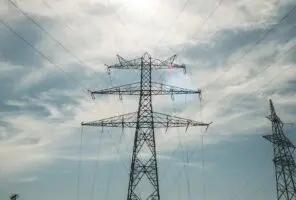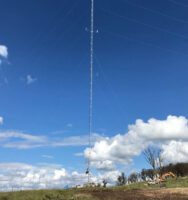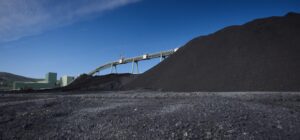Danish company Rope Robotics has demonstrated that its wind turbine blade repairing robot yields a return on investment within six months, repairing turbine blades around four times faster at half the cost of traditional methods.
The Rope Robotics ‘BR-8’ robot has been in operation for 18 months, repairing over 150 rain-damaged onshore wind turbine blades on three continents.
Repairs provided by the BR-8 help to not only restore optimal turbine power output, but are also quick, cost-effective, efficient, and safe for technicians to perform in all but the most dangerous weather conditions.
Manual alternatives – which require technicians to literally abseil from the nacelle to the blade and work with harmful chemicals while hanging in mid-air – were unsurprisingly difficult and costly.
“Feedback from customers so far confirms our calculations that after six months, the investment in the robot repair service has paid off,” said Martin Huus Bjerge, CEO of Rope Robotics.
“The robot has been well received especially in countries like the US and South Africa where there has been a backlog of repairs. The robot is therefore an additional capacity to the market right now.”
Rain damage may seem an odd concern for the uninitiated, but erosion damage caused by rain is an increasing problem, and one that affects the aerodynamic performance of the blade and, at worst, can lead to blade failure and expensive turbine downtime.
“Rain erosion is an already serious and worsening issue with the longer rotor blades generating tip speeds of over 380km per hour,” Martin Huus Bjerge explained. “Rain drops at that speed act like a hail of bullets that, over time, damage the leading edge of the blade.”
The robot uses a vacuum system to attach itself to the blade where it is able to move about, using on-board high-resolution camera and laser scanner to inspect the surface. These images are sent back to a technician operating the robot, who is able to diagnose the damage and initiate repairs.
Repair takes place across three phases. First, the robot sands the damaged area, then cleans the surface using a brush and alcohol to remove dirt and grease. Finally, the patented dosing tool applies a leading-edge protective material while another patented spreader tool rebuilds the optimal aerodynamic blade shape, smoothing the material to pre-defined standards.
“Perhaps surprisingly, the biggest challenge was to develop a functioning spreader and dosing tool that can apply viscous material both accurately and flexibly to fit different blade types,” Martin Huus Bjerge said.
“There are so many variables to consider like temperature, humidity and fluid dynamics. Implementing that into a fully functioning robot that is now working on wind farms around the world was an arduous but fulfilling task.”
Test repairs on offshore wind turbines are already in progress, and Rope Robotics is hoping to make a commercial launch later this year.










